
It's difficult to miss that the stage was designed to resemble a classic optical illusion. The two faces provide the outline of a central chalice. Clearly this chalice represents nothing less than the Holy Grail. That this conclusion is not as outrageous as it might seem is confirmed by the fact that Beyoncé's husband, Jay-Z, is rumoured to be releasing a new single called "Holy Grail."
That the Holy Grail should reveal itself during the halftime of one of the most watched spectacles on Earth has to be significant. That it should turn up in the context of everything else this blog has examined about Super Bowl 47 is even more remarkable.

Receptacle
In The Secret Teachings of All Ages, Manly P. Hall provides a good summary of the Grail's background:
...it is generally depicted in art as a chalice of considerable size and unusual beauty. According to the legend, Joseph of Arimathea brought the Grail Cup to the place of the crucifixion and in it caught the blood pouring from the wounds of the dying Nazarene. Later Joseph, who had become custodian of the sacred relics--the Sangreal and the Spear of Longinus--carried them into a distant country. According to one version, his descendants finally placed these relics in Glastonbury Abbey in England...
A couple of things immediately stand out in this description. One is that the Grail has always been associated with the Spear or Lance of Longinus. In a sense these two can be considered as two halves, obviously female and male, of one symbol of conjoined opposites -- much like the yoni and lingham of Indian tradition. In a recent post I've also connected the Lance with Adam Lanza.

Another thing that strikes me from Hall's summary is that both of these holy objects were brought to Glastonbury Abbey next to the Glastonbury Tor, which was the central feature of the Opening Ceremony for London 2012. Was the site of the Grail shown last year only to have the vessel itself be revealed at the present time?
Hall goes on to discuss some of the meaning behind the Grail:
The Holy Grail is a symbol both of the lower (or irrational) world and of the bodily nature of man, because both are receptacles for the living essences of the superior worlds. Such is the mystery of the redeeming blood which, descending into the condition of death, overcomes the last enemy by ensouling all substance with its own immortality.

Hall continues by identifying the Grail with the heart of the believer, and claiming that the search for it is really the search for one's own Self. When this is found the Great Work will be consummated. This moment of consummation, where spirit and matter lose themselves in each other, is the major focus of this blog.
This is the spot where Dante, after hard travel through Hell and Purgatory, finally is reunited with his beloved Beatrice at the foot of the Tree of Knowledge. Upon drinking from the cup, the Fall is reversed. In the alchemical tradition, the Grail is the vessel which combines and transmutes the energies of the Sun and Moon.

In his early book, The Sign and the Seal, Graham Hancock makes the argument that the Holy Grail is in fact the Ark of the Covenant. Among other evidence, Hancock uses references in Wolfram von Eschenbach's Grail romance, Parzival, to place both the Ark and the Grail in Ethiopia and thus he asserts their identity. Hancoock's conclusions are intriguing but controversial. The mythopoetic connection between the two sacred items, though, is clear.
The Ark is also hidden. While housed in the Temple of Solomon it was hidden from the eyes of the profane by a protective veil. After the temple was destroyed the Ark became hidden to history itself. The Ark will only be revealed at the end of time when the New Jerusalem appears in the sky. The Ark, like the Grail, is a sign of the Apocalypse. The quest for both is the quest to end history.

The Ark was always set on the centre line between the two pillars of the Temple, like Christ on the cross between the two thieves. Similarly in certain versions of the Grail romance, King Arthur's knights sat at the Round Table with a place for the Grail at its centre. The table, at times with 12 knights seated, represents the wheel of the zodiac. Like the year, like the two pillars, like the Super Dome during the blackout, the table has a light and dark half. The Grail unifies these opposites at the centre.

The Mingling
That the Grail appeared, then, at Super Bowl 47 between two opposing faces seems very appropriate. The Grail represents the coming together of all contrasts. This idea, including the cup/faces illusion, is explored in the painting "Romeo and Juliet" by Mexican artist, Octavio Ocampo.
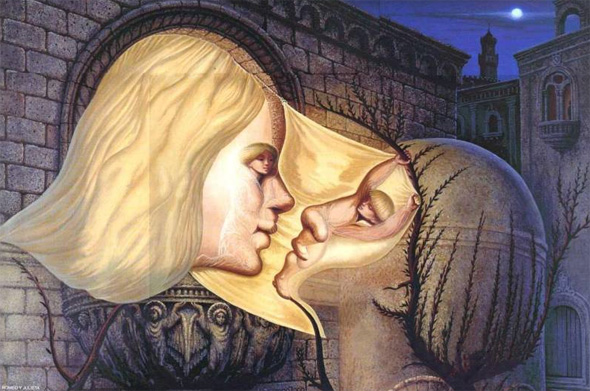
Romeo and Juliet are the very archetype of the lovers. They represent a sacred love that transcends all social and moral stipulations, a love that is really only fully consummated and made immortal in mutual sacrifice. This is the essence of the Grail. The Spear and the Cup are united here forever.
It's interesting, then, that the same set of symbols are represented on Major Arcanum 6, The Lovers, of Crowley's Thoth deck.
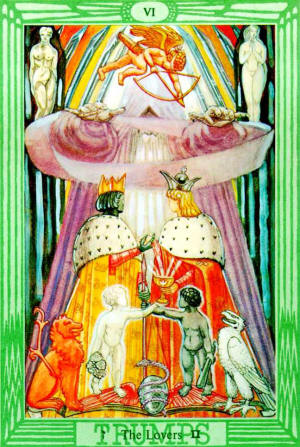
In Crowley's explanation to this card in The Book of Thoth, a royal wedding is described, an alchemical marriage. The alternate name Crowley provides for this card is The Brothers. It is two children, one white and one black and presumably brothers, who bear the Grail and the Lance. Crowley makes it clear that these two are Abel and Cain, also the twins of Gemini.
All of this meshes perfectly with the relational schemata of Finnegans Wake. The Lovers card represents the hieros gamos of HCE and ALP, the Mountain and the River, but it also depicts the union of the brothers, Shaun and Shem. The first brother aims to preserve the order of his father and the second desires to destroy it, but the two must merge as one in order to take the father's place.

Only after this can they ever hope to become an equal partner to the Goddess. If this does not happen the alchemical experiment fails and Time continues on its weary course. The Lovers card, though, shows the way forward. The gray egg at the bottom (much like the egg Lady Gaga was hatched from during the 2011 Grammy's) points the direction toward eventual consummation.
The two lovers, HCE and ALP, should not be passed by quickly. They hold the clues to solve a complex riddle. HCE is the conspiracy. "....Some dub him Rotshield and more limn him Rockyfellow..." He is at the apex of the pyramid. He is the patriarch of the top banking dynasties. But he is more than this.
Your heart is in the system of the Shewolf and your crested head is in the tropic of Copricapron. Your feet are in the cloister of Virgo. Your olala is in the region of sahuls.

It is clear that HCE is no less than the Demiurge, the Master Archon, the God of this world. HCE is the centre of the occult conspiracy. But who is ALP? She is, as we will see, the web of sync itself.
2013, according to various interpretations of the tarot, is the equivalent to Card 6, The Lovers (2+0+1+3). This year resonates with everything implied by the sixth Major Arcanum.
During her performance Beyoncé sang a medley of several of her hits. "End of Time" has obvious associations, while "Put A Ring On It" resonates with the theme of the One Ring explored earlier.
The golden ring suggests the gold of the 49ers. The 49ers, of course, are named after the prospectors of the 1849 California Gold Rush. At the time the 49ers were also called the Argonauts -- named after those that sailed in the Argo with Jason to retrieve the Golden Fleece. This quest is deemed by many mythologists to be a source for the legend of the Holy Grail.
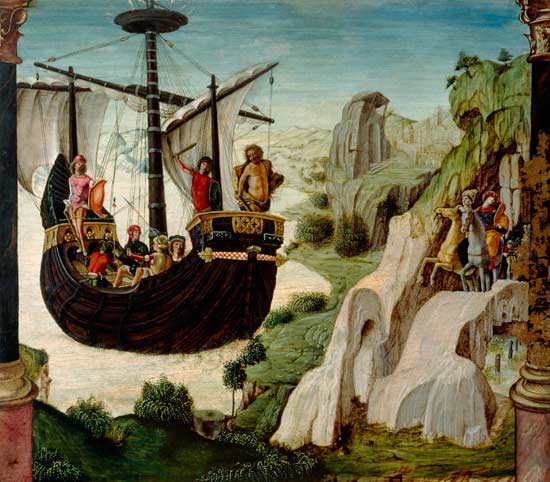
Evermore
The San Fransisco 49ers, in this context, resonate with the golden Grail of the halftime show. But what about the Baltimore Ravens? Where do they fit into this unfolding narrative? As noted previously, the Ravens are named after the famous poem by Edgar Allen Poe. This holds the key.
"Prophet," said I, "thing of evil! Prophet still, if bird or devil!
By that Heaven which bends above us-by that God we both adore -
Tell this soul with sorrow laden if, within the distant Aidenn,
It shall clasp a radiant maiden whom the angels name Lenore,
Clasp a rare and radiant maiden whom the angels name Lenore."
Quoth the Raven, "Nevermore."
If the Grail signifies what can unite the Lovers, the Raven is its shadow. It is what speaks "Nevermore" -- the spirit of separation. The Grail as backed-up toilet bowl. Like Dante with Beatrice, Poe is even more irredeemably separated from the fictional Lenore. Poe published "The Raven" in 1845, but two years earlier "Lenore" was published. The theme of the dead wife or lover, Lenore, is common to both poems. "Lenore" explicitly conveys the fact that the Grail is the contrast to the Raven.
Ah, broken is the golden bowl! the spirit flown forever!
Let the bell toll!—a saintly soul floats on the Stygian river;
And, Guy De Vere, hast thou no tear?—weep now or never more!
See! on yon drear and rigid bier low lies thy love, Lenore!
The golden bowl is the Holy Grail. Lenore, whoever she was in real life, was clearly Poe's muse. Her death, and his separation from her represented by the raven, certainly impacted his later writing. Super Bowl 47 had much more going on than just football.
In March of 2012, a month after Super Bowl 46, The Raven was released starring John Cusack. This movie, set in Baltimore in 1849, depicts the last days of Poe's life. If life was a work of literature something like this would be called foreshadowing.
I have not seen this film, but by watching the trailer it appears to hinge on the idea that Poe's writing both inspires real life events to happen, in this case a series of murders, and is able to predict and thus prevent new events from occurring. The irony here, of course, is that movie itself can be seen to predict the results of the subsequent Super Bowl (the Ravens overcome the '49s -- the year of Poe's death), and perhaps also the strange passage that this event is framing in ritual.

It's fascinating to consider that in 2009, John Cusack, playing the role of a hack writer who wrote a book about Atlantis, smuggles his family on board of an elite ark and escapes the Apocalypse in 2012, and in the actual year 2012 he stars in a movie about Edgar Allen Poe that appears to directly point to the singular moment of the present. Is the real 2012 occurring right now?
This year, 2013, the cross-quarterly pagan festival of Imbolc took place on the 3rd of February, the exact day of Super Bowl 47. This festival traditionally honours the goddess Brigid and the coming of Spring. Her Christianized counterpart, St. Brigid/Brighid or St. Bride, is celebrated on the same day.
Brigid is the goddess of many things, but is primarily associated with poetry, the arts and crafts, and the gift of eloquence. She is also a goddess of fire, like Beyoncé during the halftime show, and a goddess of dairy cows.

Curiously, according to neo-pagans, she is also connected with the raven.
Raven is associated with Imbolc, the Feast of Saint Brigit, because it is the first bird to nest in the Highlands, around the beginning of February. ‘Cuirear fitheach chon na nide’, (The raven goes to prepare his nest).
In Poe's poem "The Raven," this connection seems to be confirmed. The talking bird comes into sight of the poet "perched upon a bust of Pallas just above my chamber door." The "Pallas" here is Pallas Athena, who in Rome was called Minerva. Both of these goddesses are exact equivalents to the Celtic Brigid. All three are deities of wisdom, inspiration, and the arts. Poe did not perch his raven on the bust of Athena idly. The symbolism, including that of the Super Bowl, is a perfect match.
The Drink of Poets
Brigid may also have connections with the Holy Grail. Closer to her Irish home, her Welsh counterpart is the enchantress, Ceridwen. Ceridwen is most widely known for her Cauldron of Poetic Inspiration. The Welsh word for this is awen, which while usually referring to that special inspiration attained by poets, musicians and prophets is now generally used to refer to the creative, flowing energy in all things that are truly alive.

Clearly, Ceridwen and her cauldron resonate with Brigid, goddess of the poets. It's obvious, also, that Joyce as the Cauldron was filled and overflowing with awen. Like Joyce, the Welsh bard Taliesin was born literally filled with this inspiration. Taliesin began life as Gwion Bach, Ceridwen's servant, who stealthily drank the three drops of awen from the cauldron that his mistress had intended for her son, Morfran (whose name coincidentally means "Great Raven").
Ceridwen discovered Gwion's act and, after a series of mutual animal transformations and pursuits, she eventually devoured him. This led to her pregnancy and Gwion's subsequent rebirth as Taliesin. This new baby was so beautiful that Ceridwen could not kill it. A great poet was born.

This story of the cauldron of inspiration has very ancient roots in Celtic mythology. Most certainly it derives from the bottomless cauldron of plenty owned by the Dagda, the "All-father" god of old Irish mythology. Brigid is the daughter of the Dagda.

A more direct precursor to the Grail, however, arrives in the story of the giant king of Britain, Bran, as told in the Welsh Mabinogion. Bran possessed a magic cauldron that could bring the dead back to life. The similarities between Bran and the Fisher King, the keeper of the Grail -- who I'll come to later, have been noted by several scholars. Bran's cauldron, like Ceridwen's and the Dagda's, definitely possesses the healing and inspiring qualities of the Grail. Bran the Blessed literally translates to "The Blessed Raven."
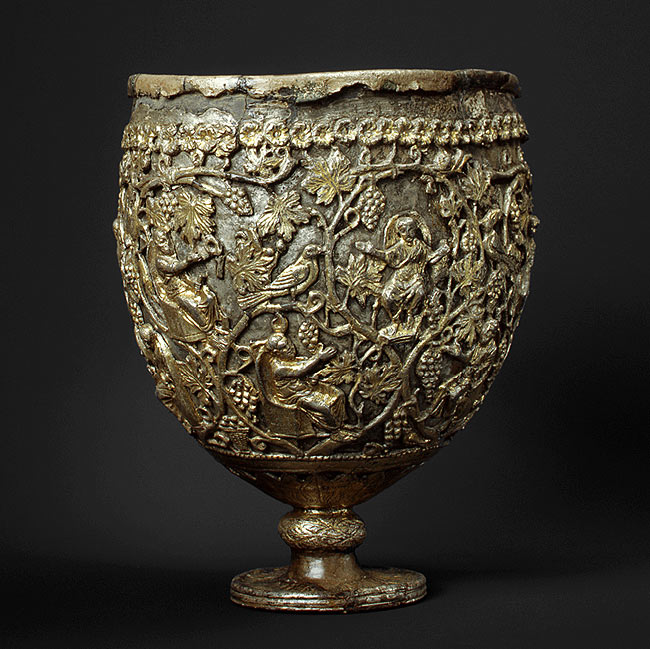
The connection between Grail, raven, and goddesses of inspiration like Athena and Brigid seems to be quite well established. But what, if anything, is the relevance of all of this to the Super Bowl and the present passage between Ages?
The Emissary
Lady Augusta Gregory, the same woman who appeared in a dream to the Richard Linklater character at the end of Waking Life, wrote briefly about Brigid in her 1904 book, Gods and Fighting Men. The goddess is described as
...a woman of poetry, and poets worshipped her, for her sway was very great and very noble. And she was a woman of healing along with that, and a woman of smith's work, and it was she first made the whistle for calling one to another through the night. And the one side of her face was ugly, but the other side was very comely. And the meaning of her name was Breo-saighit, a fiery arrow.
Again, Brigid is shown to be a goddess of poetry, healing, and the craft-smiths. Lady Gregory adds one important detail -- Brigid's face is also polarized. One half is ugly, one half is beautiful. One half is dark, one half is light. This recalls the dark and light halves of the Superdome during the Joycean blackout, and the two faces of the halftime show. The goddess was clearly present on her festival day.
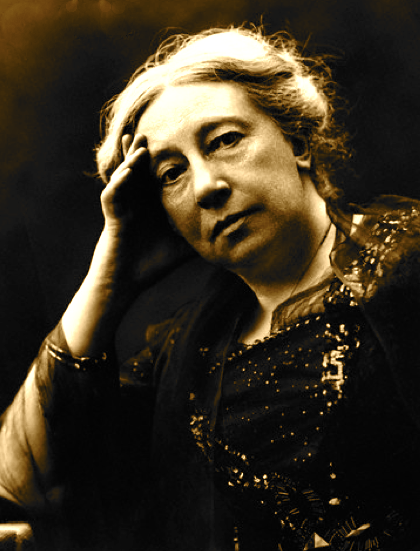
Joyce, like Yeats, was once a beneficiary of Lady Gregory's generosity. And while many years later the two had a falling out, Joyce entirely shared her reverence for Brigid. Being born on the day of the goddess and saint, and being a master of prose poetry in his own right, he was surely a servant and lover of this divine female of eloquence and creative flow. In 1902, while he was just 20, he wrote to Lady Gregory:
All things are inconstant except the faith in the soul, which changes all things and fills their inconstancy with light, but though I seem to be driven out of my country as a misbeliever I have found no man yet with a faith like mine.
Joyce claims to be called a misbeliever, but then writes of his unparalleled faith. But faith in what? Several Joyceans, including Marshall McLuhan, contend that Joyce remained a good, if complex and strange, Roman Catholic right up to the end. Joyce may have challenged very roots of his faith in the Church, but he never entirely rejected it.

I'd like to suggest, though, that his faith was in something very different than Roman Catholicism. His faith may have been catholic, but it was the original Irish Catholicism of St. Patrick and St. Brigid. Joyce's faith was in the ancient Celtic Church, which never severed itself completely from the pagan worship of the gods, and especially the goddess Brigid. The implications of this, as we'll soon see, could be the key to nearly everything happening at this time.
In a thought-provoking short essay, the Riverend Clarence R. Sterling discusses the immense importance that Joyce, throughout his career, placed in Brigid:
Joyce considered St. Brighid to be his muse and liked to have his works first issued on February 02 to honour her. She is invoked in all post-Chamber Music work. As St. Bride [220.03], Brighid continues to maintain her abbey, now a "finishing establishment" for the "The Floras . . . a month's bunch of pretty maidens." She is Maria in "Clay," the moocow in Portrait, the old milk woman in Ulysses, the maid in Exiles (and don't miss the milk truck), the broken branch in "Tilly," (one means allowed to stoke the sacred fire at Kildare was to wave air over it with a branch), and a thousand references to milk and things bovine in FW.
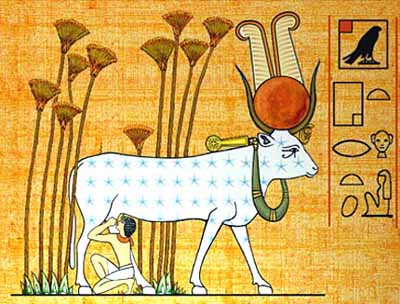
Longawaited Messiagh of Roaratorios
This may be a good time to reassert and make explicit the crazed suggestion that I only hinted at in my last two posts. I asked; what does Joyce, and the synchronicities blatantly involving him, have to do with the occult conspiracy that many find so evident in Super Bowl 47 and other mass spectacles?
Could it be, in all seriousness, that he is, and always has been, an active emissary of Brigid? That he is to Brigid as Taliesin was to Ceridwen? That Lady Gregory, Yeats, AE, and other Golden Dawn affiliated members of the literary Celtic Twilight movement were very aware of Joyce's distinction, and that this is the reason why these mature and established authors placed so much hope in the young writer? And perhaps -- this is why he ultimately, like Krishnamurti and other reluctant messiahs, rejected them.

Could it also be that Joyce drank the three drops of awen, tasted the redeeming blood of the Grail, and found immortality not just in his work, but as a conscious entity? Could it be that the Wake encodes all of this, is how he continues to communicate with the world, and is the magical guide to create, like Blake's Golgonooza, the unfolding new eon?
This is obvious madness. It may make for interesting fiction, but this kind of thing is a bit dangerous to be taken literally. The insanity of sync is that it applies the methods of literary criticism and dream analysis to current events. Can day-to-day reality actually be read as a book or a dream? Joyce and Blake clearly thought so, and we should take them at their word. As we get deeper into this, the crazed suggestion begins to make more and more sense. Alarmingly so.

Hey man long time reader.
ReplyDeleteMy new blog;
http://whitewhalereddragon.blogspot.co.uk/
Great to hear from you. Interesting alignments on your blog.
DeleteIn the Wake, Joyce did with mind what Pollock later did with paint. For these men, the pen and the paintbrush had already done their job of piercing the body, what was needed was a vessel to simply collect the flow. I think of the films of Warhol as well, perplexing and maddening at the time, but seen today have acquired a quality no other films of the era seem to have attained. The collected blood in these cases is turning into wine; with print, te transubstantiation is occuring in the most explicit way. So this makes Joyce a true Priest, as it is through his magic that the miracle is taking place. Pretty god-damb Catholick if ewe ax meat.
ReplyDeleteYes! Totally right with Pollock. Another one in the pantheon.
DeleteJoyce is Catholic but never Roman.
I have some related information, but I'm having trouble publishing it. Says my html cannot be accepted and I don't know 'how' to take it out. My address is honorbright24@yahoo.com. I'm real. If you write me I'll send it over. Thanks! Your essay is remarkable. I've been studying this subject as well.
ReplyDeleteDisappointing I have not heard from you. I have been studying James Holmes, Flicker fusion, temporal analysis, in conjunction to the Dark Knight and the Sophia for some time now. I think you would find the book Flicker by Theodore Ruszak, fairly interesting.
ReplyDeletehttp://www.templeilluminatus.com/profiles/blogs/james-holmes-mind-control-flicker-fusion-temporal-illusion-the
Very fascinating stuff. It's definitely quite possible that this is happening with the Dark Knight and other films. Flicker sounds right on point. Thanks for the recommendation. I'm a fan of Roszak, but I don't know this book. My apologies for not replying. I don't often use email.
DeleteI hope that you get a chance to read it. I came upon it as when the shooting was first publicized and we 'came to know' a bit about Holmes, it was mentioned that he studied Flicker, as inre to this novel. What I hadn't expected to find, was the 'Man in the Bird Suit,' and a story very similar to Holme's own. Do you know about the Maltese Falcon and the Templars of Malta?
ReplyDeleteI know the old Bogey movie and the medieval Order, but I'm not sure what connection you're making. Flicker reminds me also of PKD's VALIS which I'm now writing about. I'm also unfamiliar with the "Man in the Bird Suit."
DeleteI am midway through the Exegeis of P.K.D. and have read Valis. In the novel Flicker our main character is drawn into movie making where he comes to understand that there is an art to filmmaking that has largely gone unnoticed...therein between the frames per second, must be darkness. The light, the dark, the light the dark. In the dark any manner of thing, in this case, revulsion, can be entered into the framework of the film. Have you ever seen a theater audience as you were on your way to the snack bar? Complete absence of primary consciousness. There is something about flicker that 'clicks into place' our hypnotic suggestion, go into trance mode state like flicking the switch on a robot.
ReplyDeleteThe cathars come to fit primarily into the hidden hands behind the film industry. The Knights of Malta (real life) contracted as payment for their landholdings the symbolic token of one black Maltese falcon yearly. The black bird is a predominate character throughout the book, Flicker.
By the way, did you know that the first transmission ever broadcast upon a television screen, was a picture of theMaltese cross? And the device, the sprocket, which holds the film in place, is called the Maltese cross? Or that the pope of malta paid Benedict a visit prior to his revelation came to him to announce his retirement? Another interesting item is that the smoke swirled, revealing his new Popish elect, on 3/13/13 at 7:06. (equals 13)
ReplyDeleteIn the book flicker our primary character studies the works of classic film. In particular one Max Castle, a German filmmaker whose techniques in filmmaking are genius at embedding a movie within a movie. (by the way an added note, did you know that when William Burroughs created his film Flicker (no relation to the script) that their audience left the theater disoriented leaving behind many of their possessions in their haste to hoof it out of there.)
ReplyDeleteCastle never made it to a truly great status but he helped in the creation of that Bogie film, with some 'effects'. (this is as per novel) and he collected footage to go into a movie he intended to make called Heart of Darkness. Have you read this novel by Joseph Conrad? I will let you catch up with me before I go on.
"the bird is fighting to get out of the egg. The the egg is the world. Whosoever would be born must destroy a world."
ReplyDeleteThis comment has been removed by a blog administrator.
ReplyDelete